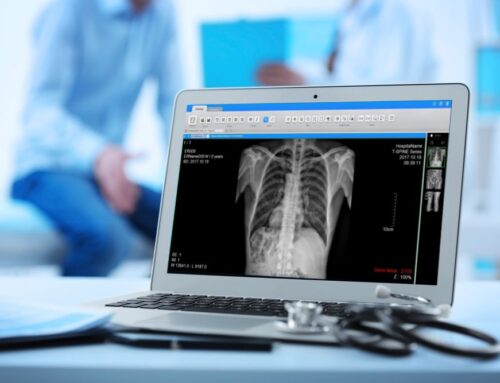Carrying life is an amazing experience for a woman, and many are anxious to see more of their future child via ultrasound scans. As technology has developed and improved greatly over the years, ultrasounds can now provide more information than ever. While later ultrasounds are much increased in detail, even the earliest ultrasounds can present technicians, doctors, and expectant parents with particulars regarding their baby’s growth and health.
5 Weeks
5 weeks is the earliest point at which a pregnancy ultrasound can be completed. This ultrasound is typically a transvaginal ultrasound, as an abdominal ultrasound will not reveal many signs of pregnancy development yet. At approximately 5 weeks, the gestational sac can be seen via transvaginal ultrasound. This is the structure in which the embryo will grow, and can generally be seen before the embryo itself is visible.
6-7 Weeks
Around 6 or 7weeks, an abdominal ultrasound will show the gestational sac. A transvaginal ultrasound given at this time is likely to show images of an early developing embryo. At this point the ultrasound technician can see the location of the embryo in the uterus and if it is an the proper, healthy location. These scans can help determine if there are signs of an ectopic pregnancy. The transvaginal ultrasound at 6-7 weeks can also show signs of the fetal heartbeat! At this point you will likely know if you have a twin pregnancy.
8 Weeks
It is around the 8th week of pregnancy that ultrasound photos will begin to have increased detail. The heartbeat is clearly accessible, as well as arm and leg buds on the growing fetus.
First Trimester Pregnancy Ultrasound (12 weeks)
Although the earlier scans are possible (and typically done by transvaginal ultrasound), the most typical first trimester ultrasound is recommended around 10-14 weeks of gestation. This is generally performed by abdominal ultrasound and should provide images of the baby which look more “familiar” to the expectant parents. This as an exciting event as the parents finally get a real “look” at their baby for the first time!
This ultrasound shows greater detail and allows the technician to assess the baby’s size and growth. At this time, a more accurate due date can be given. The technician will measure the size of the fetus from its head to its bottom, called the Crown Rump length. This measurement helps determine the speed of the baby’s growth and is important in determining due date. During this pregnancy ultrasound, movement of the baby can be clearly seen, as well as recognizably developed arms and legs. Although the ultrasound can detect movement of the baby, the mother will not yet be able to feel it inside her.
12 weeks is approximately the time when fairly accurate screening tests can be performed for Down Syndrome. This can be assessed using a test called nuchal translucency, which measures the amount of fluid in the base of the fetus’ neck. Those with a likelihood for Down Syndrome commonly have more fluid in this region. This is not always indicative of the presence of Down Syndrome, however, and further tests are needed to confirm.
What can you see in early pregnancy ultrasound?
The gestational sac contains amniotic fluid and surrounds the embryo. You may see the gestational sac in an ultrasound as early as 4 1/2 to 5 weeks. The gestational sac increases in diameter by 1.13 mm per day and initially measures 2 to 3 mm in diameter, according to the National Center for Biotechnology Information .
How early can doctor see pregnancy on ultrasound?
You typically have a one-week window between your pregnancy test and before your pregnancy is visible on a scan. Although, remember that this is the very early stages of pregnancy, and your baby is still teeny-tiny on the scan. The soonest an ultrasound can detect a pregnancy is 17 days after ovulation.

